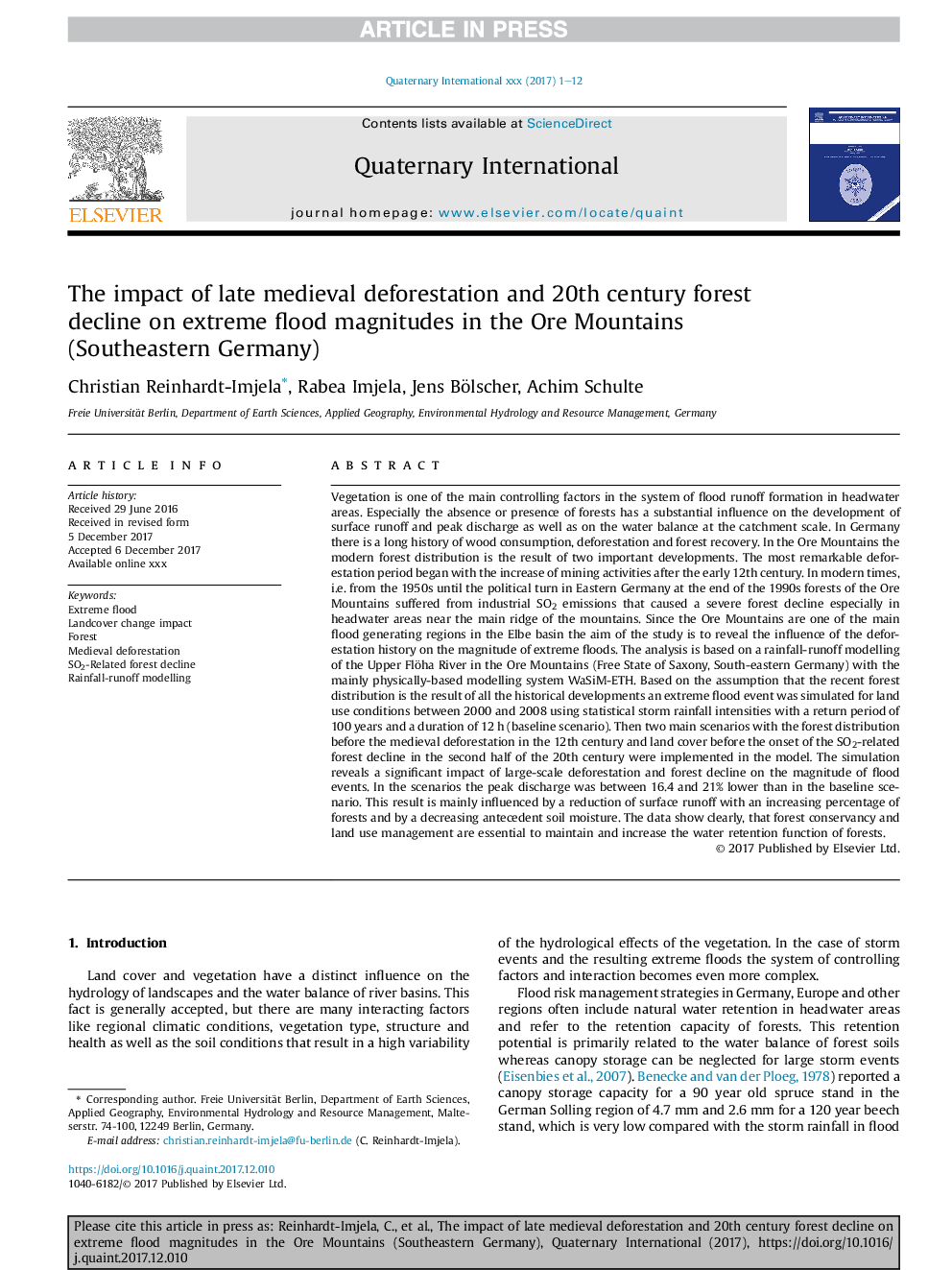| کد مقاله | کد نشریه | سال انتشار | مقاله انگلیسی | نسخه تمام متن |
|---|---|---|---|---|
| 7449636 | 1484036 | 2018 | 12 صفحه PDF | دانلود رایگان |
عنوان انگلیسی مقاله ISI
The impact of late medieval deforestation and 20th century forest decline on extreme flood magnitudes in the Ore Mountains (Southeastern Germany)
ترجمه فارسی عنوان
تاثیر جنگل زدایی از جنگل های قرون وسطایی و جنگل های قرن بیست و یکم در بزرگراه های شدید سیلاب در کوه های سنگ آهن (جنوب شرقی آلمان)
دانلود مقاله + سفارش ترجمه
دانلود مقاله ISI انگلیسی
رایگان برای ایرانیان
موضوعات مرتبط
مهندسی و علوم پایه
علوم زمین و سیارات
زمین شناسی
چکیده انگلیسی
Vegetation is one of the main controlling factors in the system of flood runoff formation in headwater areas. Especially the absence or presence of forests has a substantial influence on the development of surface runoff and peak discharge as well as on the water balance at the catchment scale. In Germany there is a long history of wood consumption, deforestation and forest recovery. In the Ore Mountains the modern forest distribution is the result of two important developments. The most remarkable deforestation period began with the increase of mining activities after the early 12th century. In modern times, i.e. from the 1950s until the political turn in Eastern Germany at the end of the 1990s forests of the Ore Mountains suffered from industrial SO2 emissions that caused a severe forest decline especially in headwater areas near the main ridge of the mountains. Since the Ore Mountains are one of the main flood generating regions in the Elbe basin the aim of the study is to reveal the influence of the deforestation history on the magnitude of extreme floods. The analysis is based on a rainfall-runoff modelling of the Upper Flöha River in the Ore Mountains (Free State of Saxony, South-eastern Germany) with the mainly physically-based modelling system WaSiM-ETH. Based on the assumption that the recent forest distribution is the result of all the historical developments an extreme flood event was simulated for land use conditions between 2000 and 2008 using statistical storm rainfall intensities with a return period of 100 years and a duration of 12Â h (baseline scenario). Then two main scenarios with the forest distribution before the medieval deforestation in the 12th century and land cover before the onset of the SO2-related forest decline in the second half of the 20th century were implemented in the model. The simulation reveals a significant impact of large-scale deforestation and forest decline on the magnitude of flood events. In the scenarios the peak discharge was between 16.4 and 21% lower than in the baseline scenario. This result is mainly influenced by a reduction of surface runoff with an increasing percentage of forests and by a decreasing antecedent soil moisture. The data show clearly, that forest conservancy and land use management are essential to maintain and increase the water retention function of forests.
ناشر
Database: Elsevier - ScienceDirect (ساینس دایرکت)
Journal: Quaternary International - Volume 475, 10 May 2018, Pages 42-53
Journal: Quaternary International - Volume 475, 10 May 2018, Pages 42-53
نویسندگان
Christian Reinhardt-Imjela, Rabea Imjela, Jens Bölscher, Achim Schulte,
